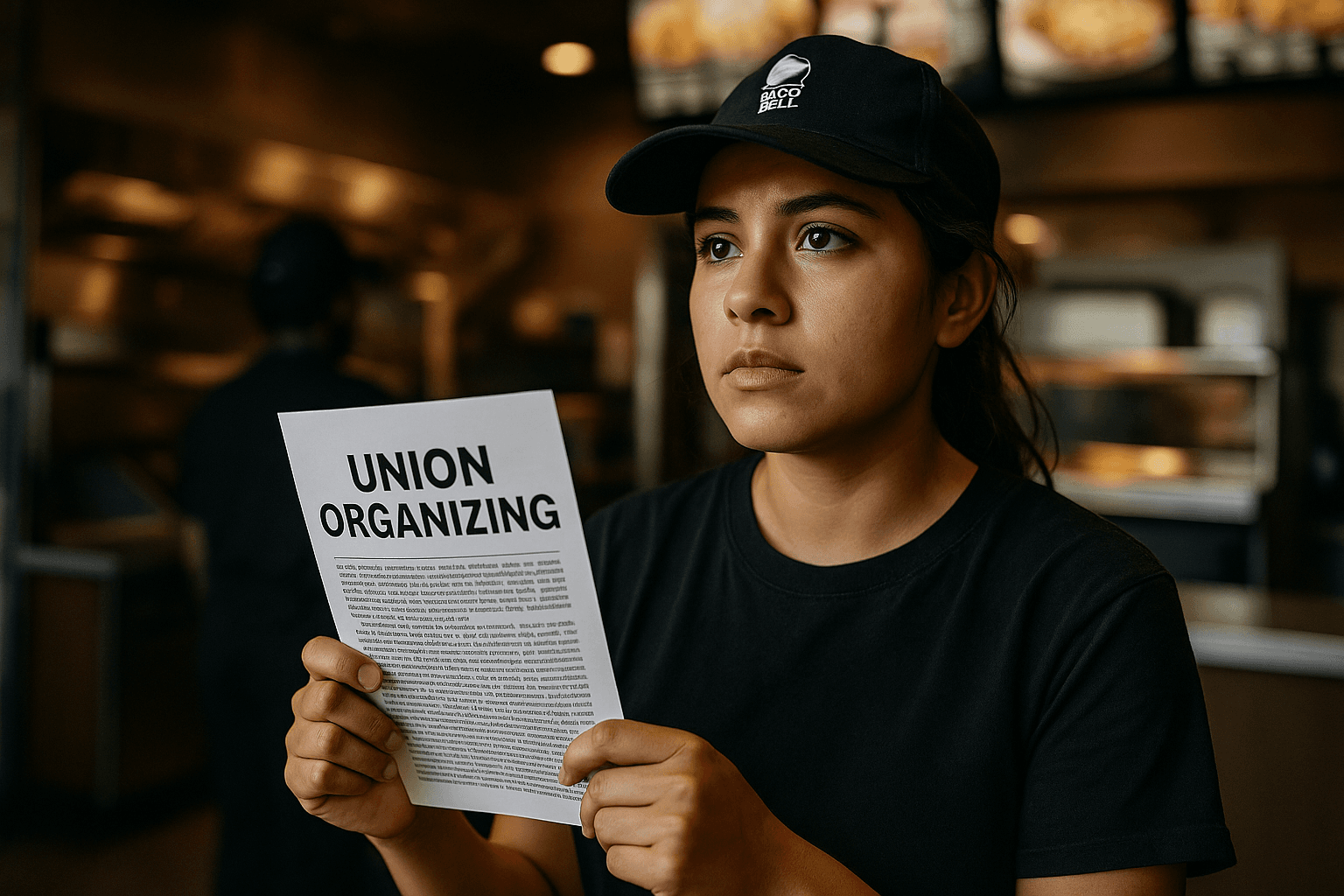Washington Guide Clarifies Union Organizing Steps for Taco Bell Workers
A chapter in the Washington State workers rights manual lays out step by step guidance on union organizing, offering practical instructions that frontline Taco Bell employees and organizers frequently consult. The guidance explains how to form a bargaining unit, how the National Labor Relations Board process works, common employer tactics to watch for, and what documentation and contacts workers should use to protect their rights.

The Washington State workers rights manual includes a detailed chapter on union organizing that has become a reference point for Taco Bell workers and other fast food employees planning collective action. The chapter walks through forming a bargaining unit, the role of union authorization cards, how to contact unions or local labor councils for assistance, and what to expect from management during an organizing campaign.
The manual outlines the National Labor Relations Board process for private sector elections and unfair labor practice charges, noting that a signature threshold of 30 percent can trigger formal NLRB action. It also recommends that organizers aim for a higher internal signature target before filing for an election to improve the chances of success. The manual offers tactical guidance for workers, urging them to document threats and to record dates and statements if management interferes with organizing activity.
That practical advice matters in workplaces like Taco Bell where card drives, captive audience meetings, and informal pressure from managers are common tactics in response to organizing. The manual lists common employer practices and separates those that are legal from those that are not. Captive audience meetings are identified as a legal employer response, while threats or punishments for employees who organize off the clock are identified as illegal. The resource also supplies practical contact points, including NLRB regional office details, and outlines next steps workers can take if they believe their rights have been violated.

For Taco Bell workers the manual can change how campaigns are run on the shop floor. Clear rules for documentation and specific thresholds give workers and organizers concrete benchmarks and a playbook for escalating complaints. Management responses that cross legal lines can be turned into unfair labor practice charges with supporting evidence, while lawful tactics may still affect morale and workplace dynamics.
As union activity continues among fast food workers across jurisdictions, the Washington manual serves as a jurisdictional resource with lessons that travel. For employees considering organizing it reinforces the importance of preparation, careful record keeping, and knowing where to take complaints when management steps over legal boundaries.


